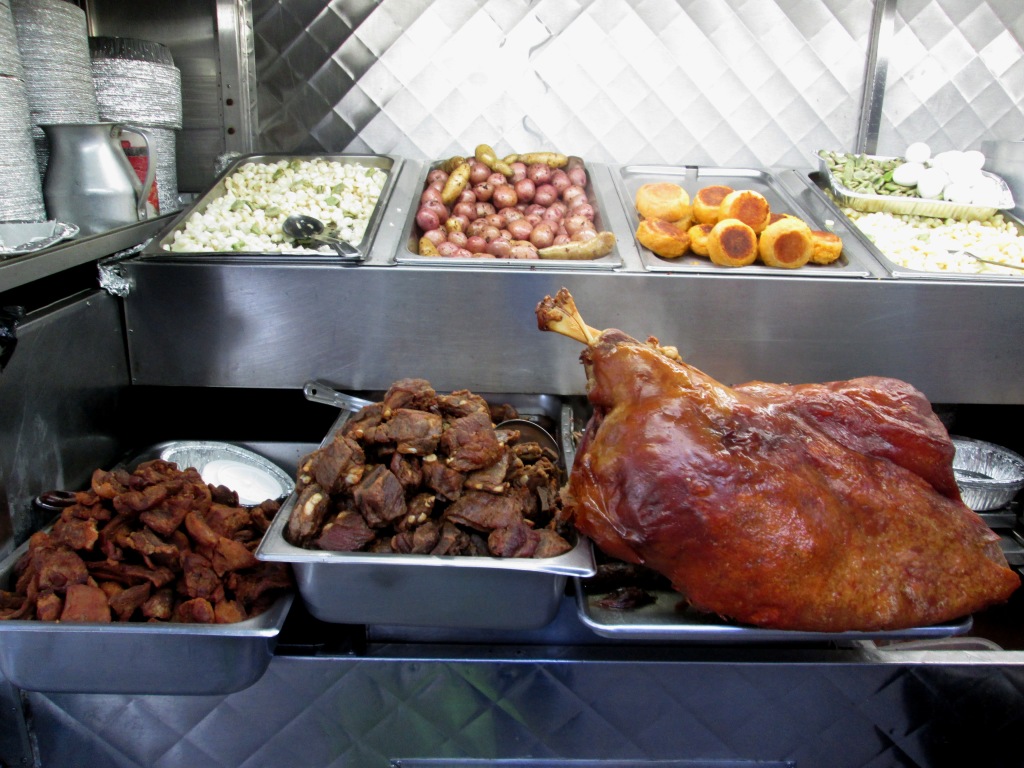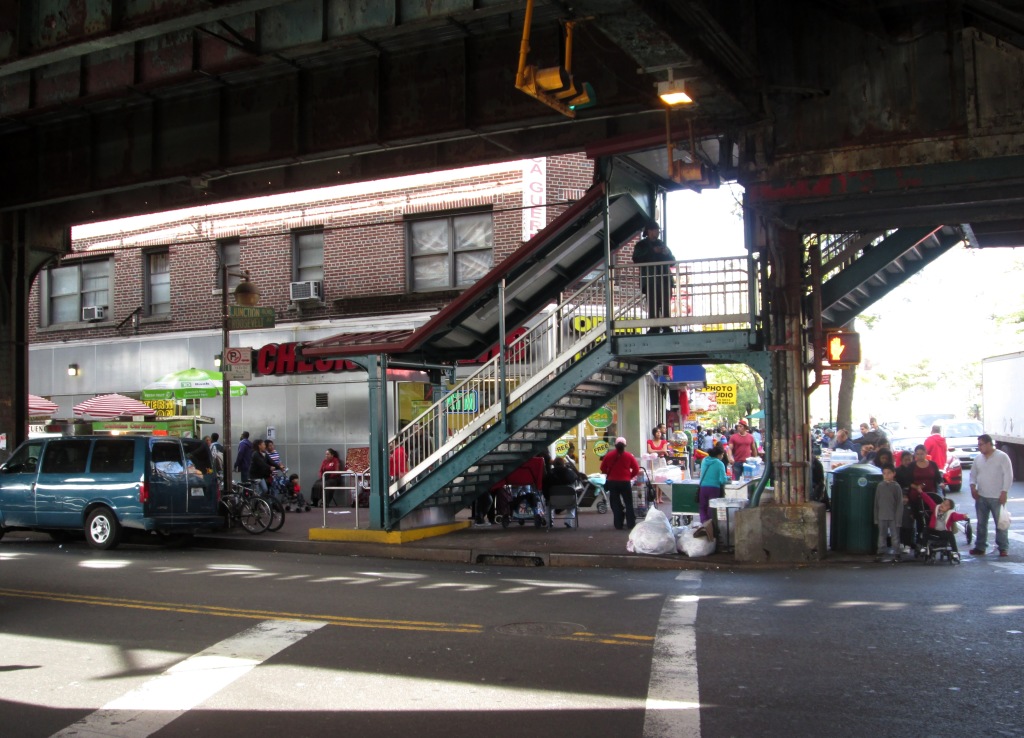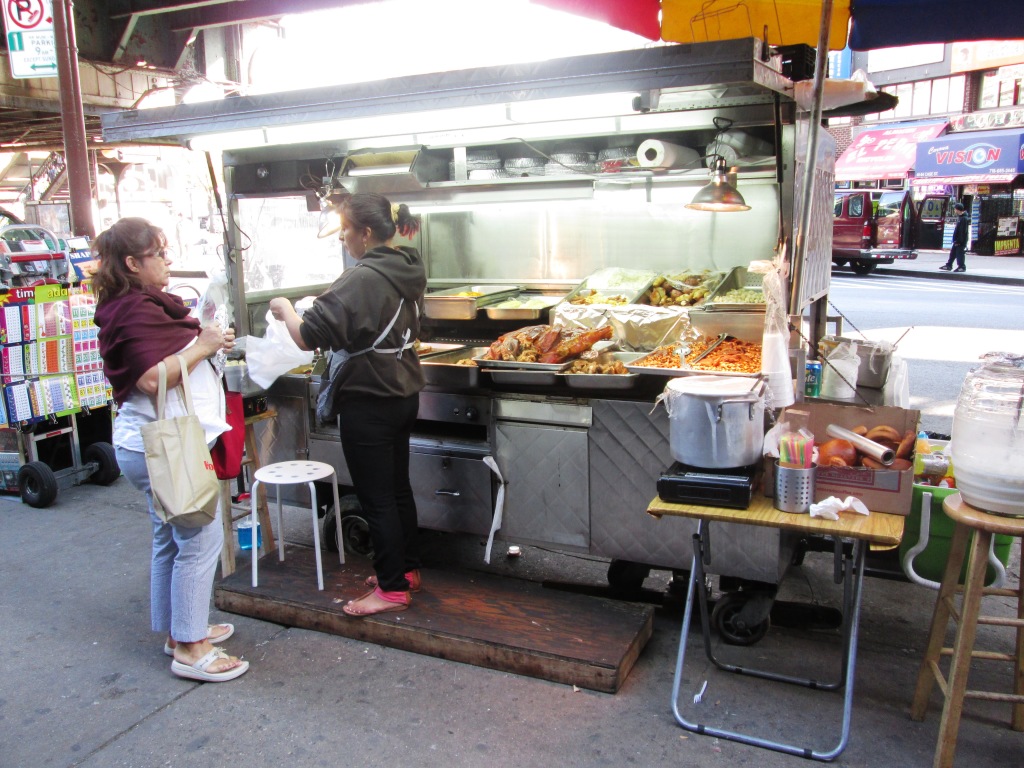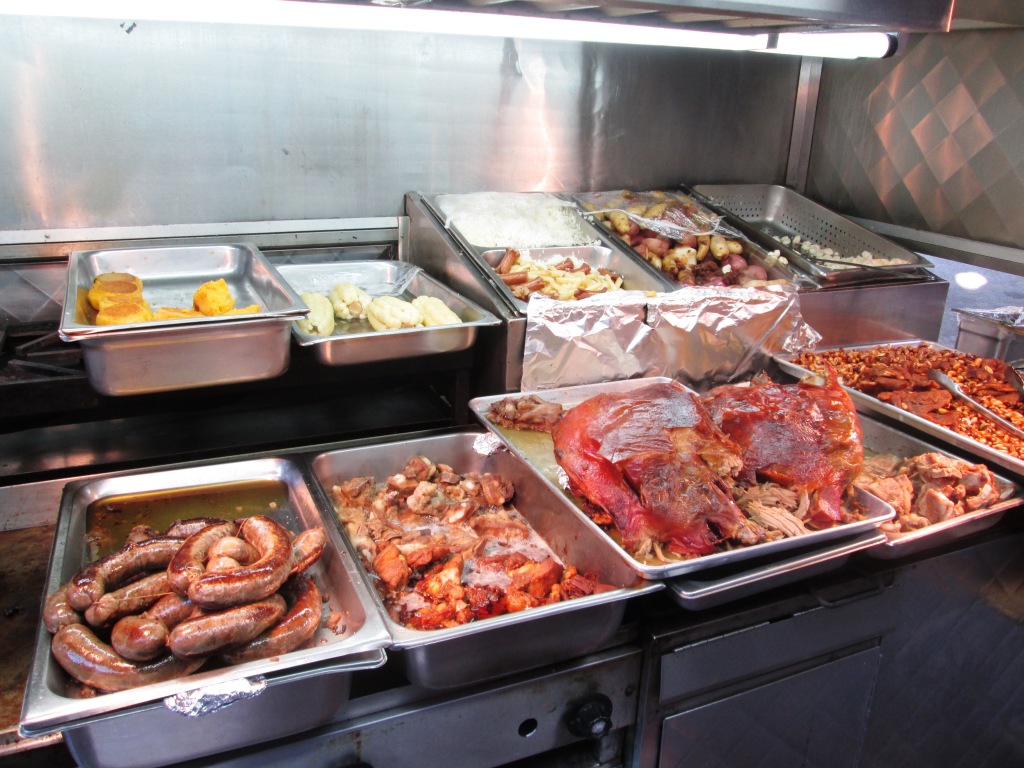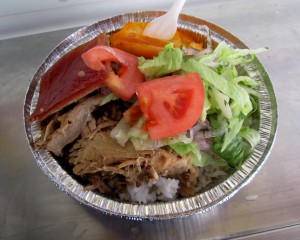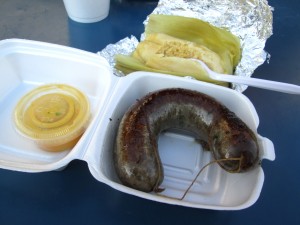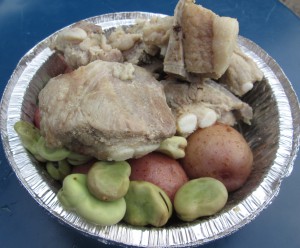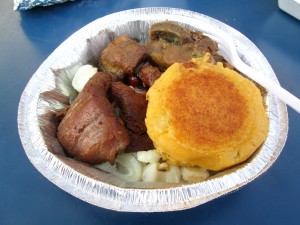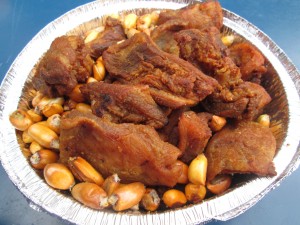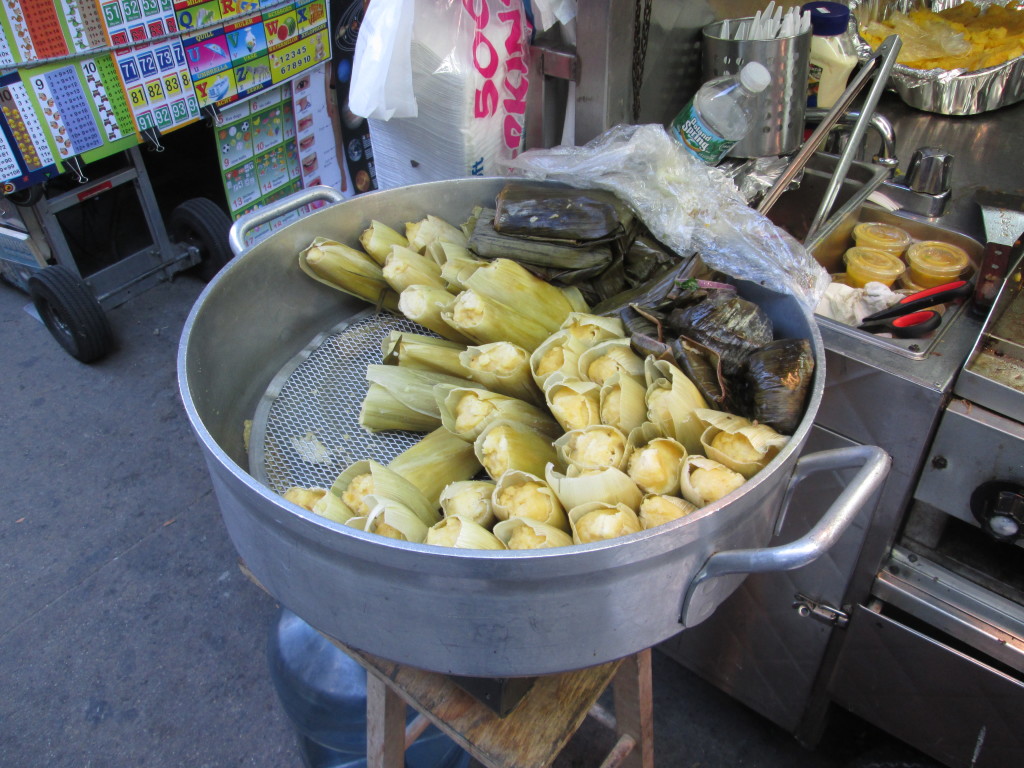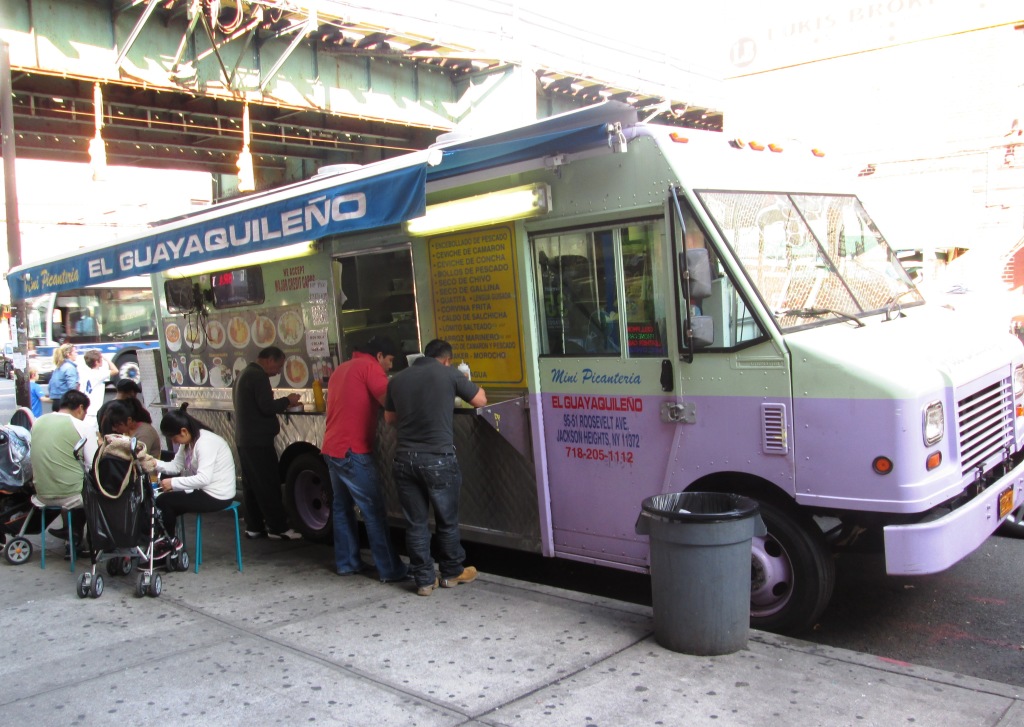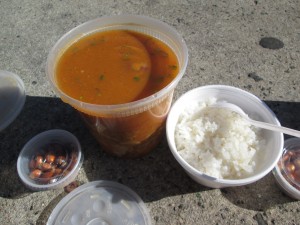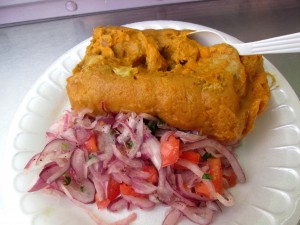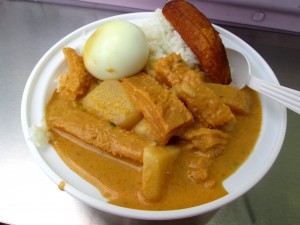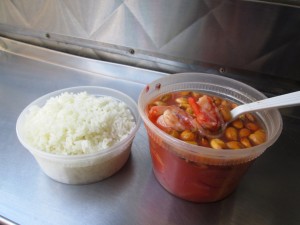(by Corbo Eng)
Once, Jackson Heights was known primarily for its Indian food (and, as a corollary, for Pakistani and Bangladeshi food as well).¬Ý Those assets are still very much a part of the community fabric.¬Ý Snooping around the western part of Jackson Heights at 74th Street or along 37th Road just to the north‚Äîperhaps, having just dashed out of the subway station at 74th & Roosevelt‚Äîone can still find enough biryani, dosas, and samosas to satisfy any inquiring appetite.¬Ý The famous Jackson Diner, serving its well-known Indian buffet, is there.¬Ý Add in the burgeoning Tibetan and Nepalese food choices (momos anyone?) that have also popped up in that area recently; and, this section of Jackson Heights is an undeniable go-to spot for the foods of the Indian Subcontinent.
The eastern part of Jackson Heights, however, is very different (and representative of peoples and cultures two continents and thousands of miles away).¬Ý Traveling east along Roosevelt Avenue, the retail corridor is, instead, a vibrant mix of Hispanic businesses‚Äîall serving a niche in the community: dollar stores, for instance, and mobile phone shops, beauty salons, clothiers, grocers, and, of course, restaurants of all kinds.¬Ý There are Colombian bakeries and Mexican taquer√≠as for the asking‚Äîalthough, perhaps, they aren’t very noteworthy (especially, for those who are used to the relatively mundane sight of baked goods and tacos).
But, beginning around 82nd Street (and heading east toward Junction Boulevard where Jackson Heights unofficially juts against Elmhurst and Corona), the Ecuadorian presence becomes more prominent.¬Ý In fact, this part of Jackson Heights is home to the largest Ecuadorian community in the United States.¬Ý Yes, Ecuadorian.¬Ý Just as Cubans have embraced Miami, for example, or as Salvadoreans have made the DC area home, Ecuardorians have carved out a place in this part of Queens.¬Ý And, luckily for us all…Ecuadorians, hungry for the tastes of home, have brought their food with them.
Admittedly, the Ecuadorian restaurants, eateries, and cafes in the area, intermittently dispersed along Roosevelt Avenue, have a lot to offer; but, after blocks and blocks of dizzying storefront signage to contend with, walking along bustling Roosevelt Avenue (particularly with the 7 train rumbling overhead), can amount to sensory overload. ¬ÝThat’s why the street food‚Äîsticking out from the norm as they do‚Äîis so¬Ýenticing. ¬ÝPerhaps, there‚Äôs a natural allure to sidewalk stalls and food trucks because their wares are far less hidden and are open to exploration. ¬ÝOne can avoid the trappings and time commitment of actually entering a brick-and-mortar business. But, perhaps, the food itself (all on its own), which is so unfamiliar to non-Ecuadorians, inspires curiosity.
Anyway, the curious gawking might very well begin with a plain, unnamed food cart at 90th Street (on the westbound side of the sidewalk) that is operated by a friendly, unassuming woman (speaking broken English) and that sells a full array of offerings.¬Ý The choices are all neatly lined up in stainless steel trays, partitioned in a systematic way, in full view of passersby.¬Ý To the uninitiated, the unlabeled meats and sides‚Äîof varying hues and looking like lumps, nuggets, and morsels of all sorts‚Äîare bound to baffle and confuse.¬Ý ‚ÄúWhat are they?‚Äù
The most recognizable offering (for those familiar with other versions of it) might very well be the roast pig (called ‚Äúhornado‚Äù)‚Äînot because of the presence of a snout or a trotter that necessarily gives it away but because the shiny, amber skin and succulent flesh underneath is very reminiscent of Filipino ‚Äúlechon‚Äù or Cantonese roast pig (like the kind that hangs in Chinatown eateries).¬Ý Perhaps, the robust links (called ‚Äúmorcilla‚Äù)‚Äîlooking universally like sausage of some kind‚Äîis the first item that people notice.
This cart, as with the other Ecuadorian carts nearby, serves so-called ‚ÄúSerrano food‚Äù (food of the mountain regions) in contrast to ‚ÄúCoste√±o food‚Äù (which originates from the coastal areas near the Pacific Ocean).¬Ý It is very meat-centric.¬Ý In fact, beyond the ‚Äúhornado,‚Äù there is more pork.¬Ý Pork is stewed (in an item called ‚Äúsancocho‚Äù)‚Äîwhich, in its tray, looks grayish as if rescued from a soup stock; and, pork also is braised and fried.¬Ý ‚ÄúFritada de chancho‚Äù is a kind of braised pork that is cooked and browned in its own fat until the liquid has evaporated.¬Ý Typically, these browned lumps of pork are sold with ‚Äúllapingacho‚Äù (a yellowish-orange, seared potato patty filled with cheese) and ‚Äúmote con habas‚Äù (an heirloom hominy made with oversized white corn kernels).¬Ý Then, there are ‚Äúchicharr√≥nes,‚Äù which should not be confused with the snack food pork rinds that Americans may know by the same name.¬Ý These are unabashed chunks of meaty pork belly that are fried until they are golden brown and the attached skin has become ultra-crispy.¬Ý The chunks of pork belly are served on a bed of roasted corn kernels (larger than the North American variety) that resemble kernels of charred, unpopped popcorn.
Ecuadorians, like Mexicans or Guatemalans, also have their own version of ‚Äútamales.”¬Ý These treats, made from ‚Äúmasa‚Äù (a corn dough) are wrapped in leaves or corn husks and steamed with a filling of‚Ķyes, pork (with other savory ingredients like eggs or cheese).¬Ý A sweet variety is called, ‚Äúhumitas.”¬Ý It is smooth and delicate‚Äîlike a slightly grainy pudding or, perhaps, less apt, like a rougher flan of some sort.¬Ý To wash down all of this food, one can order a cup of ‚Äúmorocho‚Äù (a warm drink made from milk, sugar, cinnamon, and corn)‚Äîwhich all of the Ecuadorian food carts serve.
One seeking to try some ‚ÄúCoste√±o food‚Äù must work their way past the food carts on the main thoroughfare to the food trucks‚Äîmany of which have set up shop a few blocks away on Warren Street (a side street right off of Roosevelt Avenue, which technically extends into Elmhurst, Queens).¬Ý There, on both sides of the street, the line-up of trucks have created an ‚ÄúEcuadorian corridor‚Äù of sorts (with locals ordering food and eating on a narrow metal counter alongside the trucks).¬Ý The food truck, ‚ÄúEl Guayaquile√±o‚Äù (which means ‚Äúa person from Guayaquil, Ecuador‚Äôs largest city and chief seaport) dominates the competition; but, given the usual throng of customers, the other trucks do a pretty brisk business as well.
On a typical day, customers may enjoy ‚Äúencebollado‚Äù (which is considered the country‚Äôs national dish).¬Ý It‚Äôs a hearty fish soup made with generous chunks of tuna and a plentiful amount of red onions.¬Ý The soup is typically topped off with those aforementioned charred corn kernels that float atop like little bouys and which add a relevant complement to the soup.¬Ý Another popular fish dish is ‚Äúbollos de pescado,‚Äù which looks very much like a big fish tamale.¬Ý However, instead of masa, the fish (tuna) is embedded and encased in a mixture made from mashed plantains and peanuts.¬Ý The entire encasement is wrapped and steamed to perfection like a tamale.¬Ý A side of hot sauce usually accompanies it.¬Ý Also popular is ‚Äúguatita‚Äù (tripe stew), which is made with long strips of brined cow‚Äôs stomach.¬Ý Ceviche, a dish of raw seafood linked to Peru, is also served in its Ecuadorian iteration along Warren Street‚Äîwith ceviche de camaron (made with shrimp) being a popular choice.
The beverage of choice along Warren Street, if the menuboards on the sidewalks are any indication, seems to be something called, ‚Äúquaker‚Äù (as in Quaker brand oatmeal).¬Ý This curiously named national drink apparently counts as its ingredients: oats, cinnamon, brown sugar, and ‚Äúnaranjilla‚Äù (a kind of small, round, spiny orange that tastes like a cross between pineapple and lemon).¬Ý Suffice it to say, the drink is absolutely refreshing and is a great way to accompany or end a meal.
Copyright 2014 (Corbo Eng). All rights reserved.
All photos by Corbo Eng.

